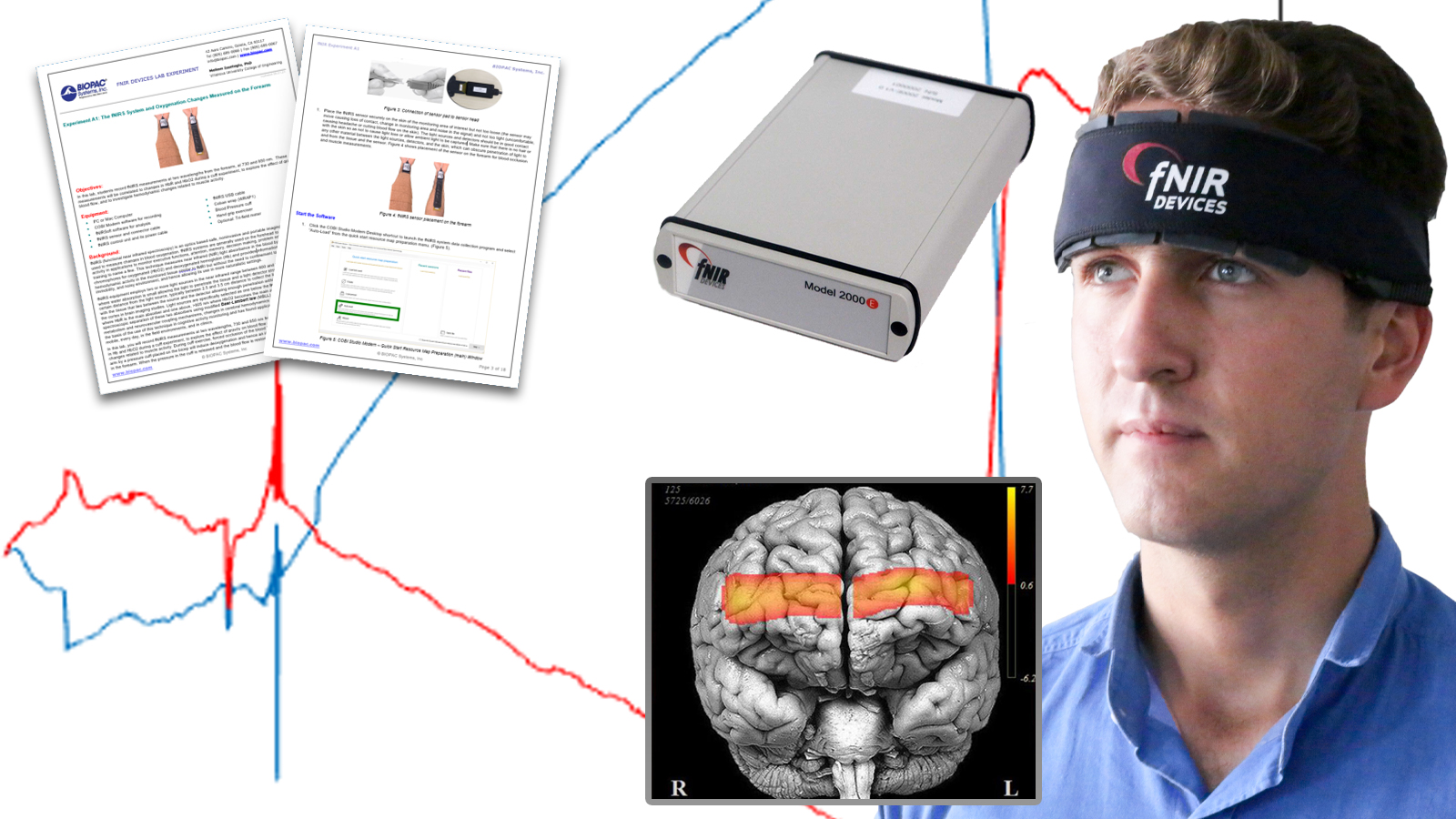F01-04 Lessons for the fNIRS Education System

BSL Lessons for Functional Near Infrared Spectroscopy guide students through muscle and brain oxygenation labs with easy-to-follow step-by-step instructions. Seeing is believing—students form stronger conceptual links with readings and lecture material covering hemodynamics, cerebral energy metabolism and neurovascular coupling mechanisms.
fNIRs Education Systems are stand-alone functional imaging solutions for continuous NIR spectroscopy. The fNIRS Education System is a complete solution for educators including curriculum materials, hardware, and software to record, process, and analyze up to six optodes of NIRS data. Curriculum materials covering four lessons with step-by-step guides for nine student-friendly exercises measuring changes in deoxygenated (Hb) and oxygenated (HbO2) hemoglobin during cognitive and neuromuscular tasks are included. Instructors can combine with existing Biopac Student Lab systems or use as a stand-alone imaging solution in their lab or classroom.
Explore the hemodynamic relationship between the brain and muscle systems with a real-time imaging system that fits in your backpack and has diverse capabilities for teaching and research.
Experimental Objectives
- To explore the effect of gravity on blood flow and investigate hemodynamic changes related to muscle activity.
- To explore the effects of head movement, blood pressure changes and skin effects on raw intensity measurements, HbR signal, HbO2 signal, and HbT signal.
- To explore oxygen consumption in the prefrontal cortex during cognitive tasks.
- To obtain oxygenation changes (HbO2 and Hb) under different conditions while performing two common tests used in cognitive research, phonemics verbal fluency (PVF) task and semantic verbal (SVF) task.
- To explore oxygen consumption in the prefrontal cortex during cognitive tasks and compare oxygenation levels while performing one or two cognitive tasks simultaneously.
Tasks Performed by the Student
- Students record fNIRS measurements to study changes in HbR and HbO2 during a cuff experiment, to explore the effect of gravity on blood flow, and to investigate hemodynamic changes related to muscle activity.
- Students record fNIRS measurements from the forehead while performing various activities to explore the effects of head movement, blood pressure changes and skin effects on raw intensity measurements and on HbR, HbO2 and HbT signals.
- Students record fNIRS measurements from the forehead while performing a cognitive test, namely the verbal fluency test. You will obtain changes in HbO2 and HbR under different conditions within this cognitive test.
- Students record fNIRS measurements from the forehead while performing a test of different cognitive loads manipulated as single and dual task conditions.
Videos
fNIRS for Education
fNIRS Lessons Overview
fNIRS Lesson 1 Forearm Oxygenation
fNIRS Lesson F2 Signals & Artifacts
fNIRS Lesson F3 Verbal Fluency
fNIRS Lesson F4 Single and Dual Tasks
Lesson Hardware
fNIRS Lessons are included with the fNIR103E Education System. They are also available by adding FNIRSLESSON-LIC to a C Series Imager. fNIRS Lessons are not included with Biopac Student Lab systems.
| Item | Name | Cart |
|---|---|---|
| fNIR103E | fNIRS Imaging Education System | Add to Cart |
| BSL-FNIRACC | BSL fNIR Accessories | Add to Cart |
| BSL4U | Software Upgrade to BSL 4 | Add to Cart |
Stay Connected